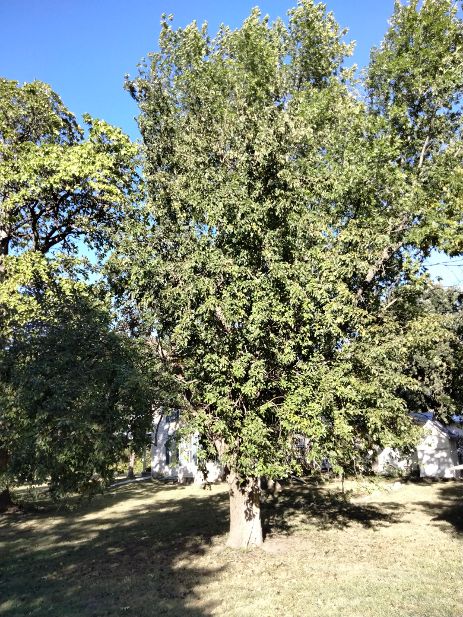 One "perk" of volunteering at Ensor Park and Museum as a tour guide during the month of September is the opportunity to collect some of the pears that have fallen onto the ground from the large pear tree located just to the southwest of the historic Ensor home.
One "perk" of volunteering at Ensor Park and Museum as a tour guide during the month of September is the opportunity to collect some of the pears that have fallen onto the ground from the large pear tree located just to the southwest of the historic Ensor home.
I took advantage of that very opportunity three months ago, gathering up several decent-looking pears one Sunday afternoon with the intention of eventually boiling what was left after I had de-stemmed and de-seeded the pears, and removed any bad spots in or below the skin, too. I was ultimately rewarded with three or four helpings of bite-size pear chunks that nicely complemented the main dish for a midday or evening meal.
Needing to watch my sugar intake these days, I didn't sprinkle any sugar on my pear chunks and found them to be tasty enough just in their natural state. I hope to be able to repeat this move, collecting a few good pears and then boiling them for consumption later, next fall.
In the meantime, I will ponder the possibility of there being a sample of pear wood among the wood samples that are on display in the north room of the peg barn at Ensor Park and Museum. I also will wonder whether or not Marshall Ensor ever made anything out of pear wood since it reportedly was his goal to make something out of every kind of tree that grew somewhere on the Ensor farm.
By the way, the aforementioned pear tree is pictured above. My limited research tells me a pear tree can live to be 250 years old, but I don't think for a moment that the Ensor pear tree is 250 years old. That said, perhaps it goes back to at least 1970, the year Marshall died. I guess we'll find out when the tree dies of old age (or is toppled by a windstorm) and the rings can be counted.
